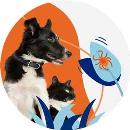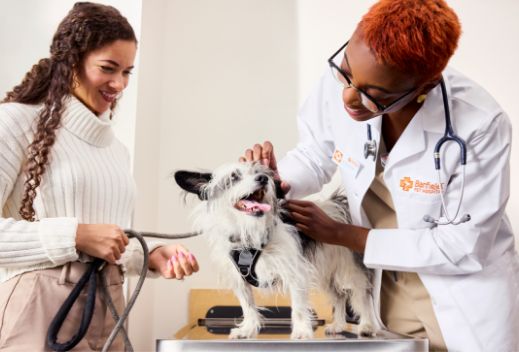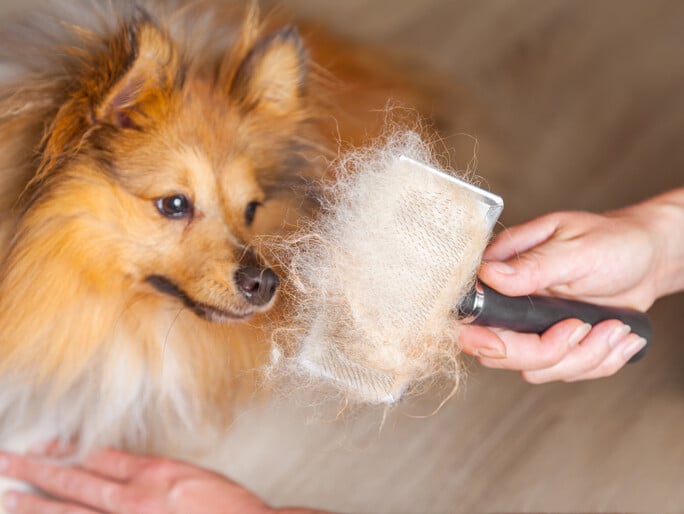how to get rid of fleas
Fleas may be tiny little insects, but they can be a big threat to your pet’s health and happiness.
Complete flea control involves treating both your pet and their environment. Fleas can go for months without food. And they’ll hide in your lawn, carpet, bedding, or furniture, just waiting for a chance to pounce.

How to check your pet for fleas
- Know a flea’s favorite places
- Go hunting for signs of fleas
- Always assume there are more around
- Flea and tick prevention is the solution

Flea control pointers
- Treat pets with year-round flea control
- Realize flea infestations can take a long time to resolve
- Think of fleas as a public health concern

How to control a severe infestation
- Prevention of disease in your pet is the first step
- Treat inside and outside the home
- Professional pest control services may be needed
How to fight fleas at home — and win
Fleas can make life miserable and even make your pet seriously ill. Smart approaches to flea control, protection, and prevention can help your dog or cat do less itching and scratching, and enjoy more love, health, and happiness. So talk to your veterinary team about the best approach for your cat or dog.

Does your furry friend have fleas? (Or do their furry friends have fleas?)
Here’s what items you need, where to look, and what to do next about fleas.
Know a flea’s favorite places
Fleas often settle down to feed in furry areas like necks, ears, and hindquarters (as vets like to say, ears and rears). They also enjoy nooks and crannies, including in the armpits and groin, at the base of the tail, and inside folds of skin.
Go hunting for signs of fleas
Using a flea comb, comb your pet’s hair from back to front to get a good look at their skin. You’re looking for
- Areas of red, irritated, or broken skin from scratching
- Small red-brown fleas, living or dead
- Smaller black specks called flea dirt (flea poop)
If you find specks, but you’re not sure what they are, put them on a paper towel and add a drop of water. Flea dirt is digested blood and will turn reddish brown when wet. Yum!
Does your pet interact with other animals?
This could be your neighbor’s pets or wild animals that your dog chases out of the yard. Either way, those other animals are pretty likely to carry fleas unless you know they’re on regular prevention (unfortunately, it’s hard to treat the local rabbits and deer). Plus, if you live in an apartment building, fleas very commonly do move about.
There are most likely more out there
A female flea can lay up to 50 eggs a day. So even if you’re only seeing dead fleas or flea dirt on your pet, it’s pretty likely your BFF still has active fleas — and any other pets in the house do too. Unfortunately, in addition to treating your pets, you’re going to need to treat your house too. Fleas can hide in your home where pets hang out even during the winter months.
Flea and tick prevention is the cure
Wash your hands thoroughly after checking your pet for fleas. Then talk to your vet about solutions, including year-round flea and tick prevention for your pet.
Fleas are a year-round thing
Fleas can still be annoyingly active even when the weather gets cold. Safe and effective flea control can help protect your pet and the entire family. Here are a few things to keep in mind:
- Treat pets year-round with flea control products to limit infestations on them and in the home.
- Realize flea infestations may take several months to solve and that all pets in the home need to be treated.
- Think of flea infestations as a public health concern; people and pets in infested areas can be bitten and develop an allergic reaction or infection. Infectious diseases will vary by location — prevention is key.
Severe infestations are a serious problem
In a flea infestation, the majority of the population is not the fleas you see; most are eggs, pupae, and larvae living (and multiplying) inside your home. Early prevention is best, but if you already have a flea problem, a comprehensive flea-control program will eliminate fleas on pets and in the environment. This may require a number of different products, including indoor and outdoor treatments. In some cases, professional pest control services may be necessary.

Worried about your pet? Ping Pet Chat™!
Whether it's 3 a.m. or 3 p.m., connect with a real veterinary professional for immediate petcare advice. It's included in all Optimum Wellness Plans®!
Log in to start chatting
Parasites on the prowl
20% OFF select parasite control meds or 25% OFF any new AutoShip. Use code BUZZOFF. Max $25 off. Terms apply.
Banfield can help prevent and treat fleas
Regular wellness exams that include a full physical and fecal exam can help keep your furball happy and healthy. Kittens and puppies should start regular appointments when they’re about 6 weeks old, and then come in twice a year once they’re 5 months old. At your visits, we’ll check your little love from nose to tail, discuss age, needs, and lifestyle, and recommend trusted prevention medication to help fight off nasty critters that might feed on your pet.

 Mites and mange
Mites and mange Podcast - Not Just Fluff
Podcast - Not Just Fluff



